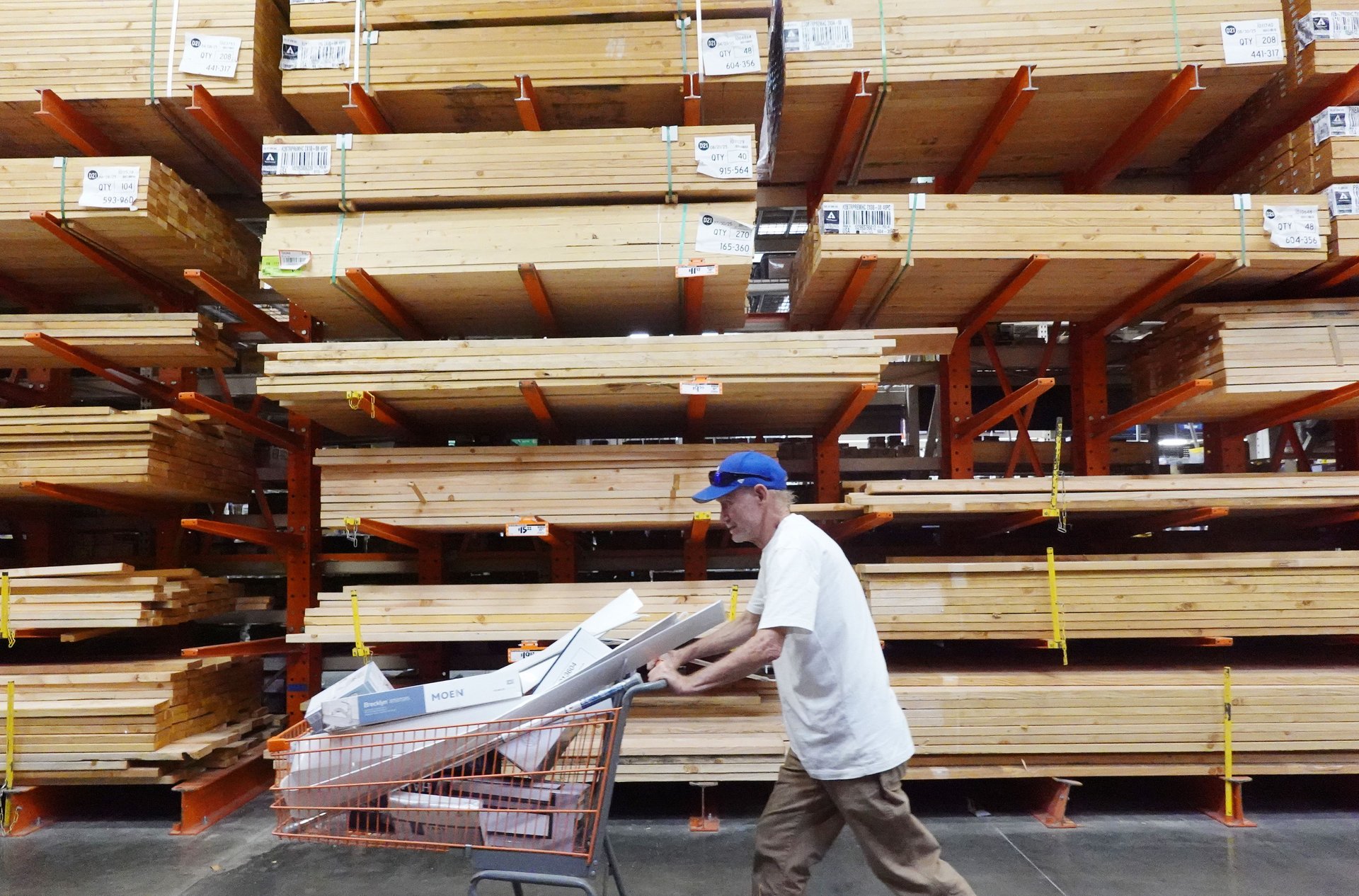Trump's new timber tariffs could drive up housing costs
The tariffs include a 10% duty on lumber and timber, plus a 25% tariff on upholstered wood products such as kitchen cabinets and vanities

Photo by Mario Tama/Getty Images
President Donald Trump ordered fresh tariffs late Monday on softwood timber, lumber, and wood furnishings, even as housing groups warn the move could drive up construction costs and furniture-industry advocates said the levies would lead to U.S. job losses.
The tariffs add to Trump’s larger trade wars that have swept across industries and individual countries. They may, however, prove more legally durable than Trump’s reciprocal country-by-country penalties because they fall under Section 232 of the Trade Expansion Act, the same legal tool the White House has used to justify duties on steel and aluminum.
Details of new lumber tariffs
The tariffs include a 10% duty on lumber and timber, plus a 25% tariff on upholstered wood products such as kitchen cabinets and vanities, effective as of mid-October. Certain rates are set to climb even higher on January 1, with some furniture imports facing taxes of up to 50%.
The measures hit Canada especially hard because the country already faces duties of more than 35%, a result of recent but separate trade initiatives. Publicly traded lumber producers most directly exposed include Canada’s West Fraser Timber, Canfor, and Interfor. In the U.S., Weyerhaeuser, Boise Cascade, and Louisiana-Pacific are the closest listed peers, with stocks prices that often move in step with lumber tariffs and demand. U.S.-based furniture retailers may also experience pain, with many major brands and labels dependent on foreign wood.
Meanwhile, U.S. homebuilders say higher wood prices could blunt construction at a moment when Trump is hoping to revive home-buying. “Our housing crisis is a bigger threat to national security than imported lumber,” the National Association of Home Builders argued earlier this year. And precedent suggests the NAHB is right to foresee rising domestic prices as a result.
"The cost of building materials has already risen by 34% since December 2020, which is far higher than the rate of inflation. Data from the NAHB/Wells Fargo Housing Market Index (HMI) April 2025 survey reveals that builders estimate a typical cost effect from recent tariff actions at $10,900 per home," according to an NAHB release.
A long-running trade fight
The lumber industry has been contested ground for decades. Since the 1980s, the U.S. and Canada have been locked in what’s been called the world’s longest-running trade dispute, with a handful of major rounds. Each time, American producers accused Canada of unfair subsidy practices, Washington imposed tariffs and penalties, and prices for U.S. buyers rose higher.
The 2017 round under Trump added thousands of dollars to the cost of a new home, and 2025’s tariffs appear poised to do the same. Some domestic sawmills may gain a price edge, but U.S. builders, retailers, and consumers typically lose. Canada, which supplies about a fifth of America’s lumber, remains too large and important a source to replace, and U.S. mills, some of which have been shuttered for decades, rarely come back to life.
The result is a familiar cycle, with Canadian imports continuing, U.S. consumers paying more, and the political symbolism outweighing the positive economic impact.
